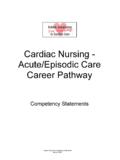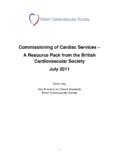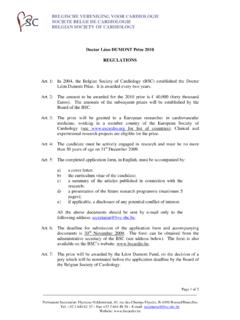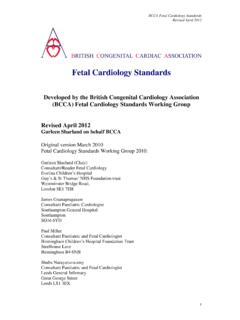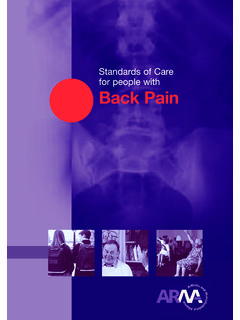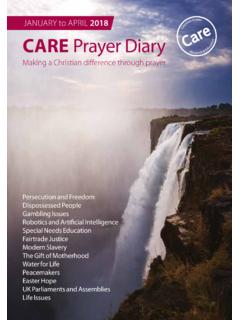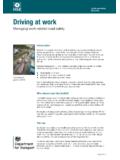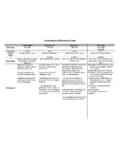Transcription of From Coronary Care Unit to Acute Cardiac Care Unit …
1 From Coronary care Unit to Acute Cardiac care Unit the evolving role of specialist Cardiac care October 2011 Recommendations of the British Cardiovascular Society Working Group on Acute Cardiac care 2 Contents Foreword .. 4 Executive Summary .. 6 Introduction .. 7 The importance of Acute Cardiac care .. 8 1. Ischaemic Heart Disease/ Acute Coronary Syndromes (ACS) .. 9 Patient population .. 9 STEMI patients .. 10 NSTEACS patients NSTEMI and Unstable Angina .. 11 2. Acute Heart Failure .. 14 3. Acute Arrhythmias .. 17 Atrial Fibrillation (AF) .. 17 Regular Tachycardia (narrow and broad complex) .. 17 Bradycardia .. 18 4. Other conditions requiring admission to an Acute Cardiac care Unit .. 19 Pulmonary embolism .. 19 Infective endocarditis .. 19 Pericardial effusion .. 20 Acute Thoracic Aortic Emergencies .. 20 Other conditions which may require Acute Cardiac care .. 20 5. Requirements for an Acute Cardiac care Unit .. 21 Size and Provision of Acute Cardiac care Units.
2 21 Medical Staffing .. 22 Nursing and Workforce .. 22 Staff Training and Skill mix .. 23 Diagnostic requirements for Acute Cardiac care (2011-2020) .. 24 ECG based diagnostics .. 24 Electrocardiography .. 24 Imaging .. 24 X-ray Fluoroscopy .. 24 Coronary Angiography Suite .. 25 Trans-thoracic Echocardiography (TTE) .. 25 Trans-oesophageal Echocardiography (TOE) .. 26 Functional Cardiac Assessment or Advanced Anatomical Imaging .. 26 Cardiac Device Management .. 27 Electrophysiological studies and RF ablation .. 27 3 Laboratory based diagnostics .. 27 Conclusions: Acute Cardiac care Unit rather than Coronary care Unit .. 29 Appendix 1: Key features of the Acute Cardiac care Unit .. 30 References .. 32 4 Working Group Members DM Walker (Chair of Working Group, British Cardiovascular Society) NEJ West (Deputy Chair of Working Group, British Cardiovascular Society) SG Ray (Vice-President Clinical Standards, British Cardiovascular Society) S Bridge (CEO, Papworth Hospital) SS Furniss (Heart Rhythm UK) J Keenan (British Association for Nursing in Cardiovascular care ) M Knapton (British Heart Foundation) C Knight (British Cardiovascular Intervention Society) GW Lloyd (British Society of Echocardiography) C Marley (NHS Improvement: Heart) TA McDonagh (British Society for Heart Failure) TJ Quinn (MINAP) D Richley (Society for Cardiological Science and Technology) K Timmis (Heart care Partnership) K Wilmer (Royal College of Physicians) 5 Foreword The management of heart attack has changed beyond all recognition over the last thirty years so a review of the Cardiac care Unit and its functions is timely.
3 When I was a house physician, CCUs were a novelty and certainly not uniformly available across the country. The only treatments available were the defibrillator (in hospitals not ambulances) and diamorphine. It was not until the 1980s that thrombolysis began to take hold and not until the advent of the National Service Framework for Coronary Heart Disease in 2000 did this treatment became universally and rapidly available which heralded the widespread and long overdue development of cardiology expertise in district hospitals. Later, when it became clear that primary angioplasty offered better outcomes, fewer complications and shorter lengths of stay, the centralisation of heart attack care in Heart Attack Centres challenged this devolution requiring collaboration between hospitals. The concept of the Heart Attack Centre is a trifle misleading since most deal primarily with ST elevation heart attacks whereas the majority of attacks are non ST elevation cases often managed in less than ideal fashion in Medical Assessment Units.
4 These so-called minor heart attacks are in fact anything but. Data from the Myocardial Ischaemia National Audit Project (MINAP) shows that at 30 days and beyond, their outlook is now less good than for ST elevation cases. We know from a range of data that these cases together with other Acute Cardiac cases are better managed by cardiology staff and it is time that systems are developed to achieve this. So this review of the role of the CCU is extremely timely and welcome. Some years ago, Douglas Chamberlain berated us for calling the units Coronary care Units and insisted on the term Cardiac care Unit. This report suggests that he was right. Professor Sir Roger Boyle CBE September 2011 6 Executive Summary The changing demographics of the UK population have led to increased admission of elderly and more complex Cardiac patients. This combined with the reorganisation of care required to provide primary PCI across Cardiac networks, has caused a significant change in the Acute cardiology workload for all Acute hospitals.
5 In this document we present evidence that patients presenting with Acute Cardiac conditions who are managed in specialised Cardiac wards have demonstrably better outcomes. However, a significant proportion of such patients are not currently managed within a Cardiac service, leading to greater morbidity and mortality, and increased costs to the NHS. The British Cardiovascular Society recommends that patients presenting with Acute Cardiac conditions should be managed by a specialist, multi-disciplinary Cardiac team and have access to key Cardiac investigations and interventions, at all times. All hospitals admitting unselected Acute medical patients should have an appropriately sized, staffed and equipped Acute Cardiac care Unit, where high risk patients with a primary Cardiac diagnosis should be managed. Access to these Acute Cardiac care Units should be open to all high risk Cardiac patients and in particular, should not be restricted to patients with ACS.
6 7 Introduction The development of Coronary care units (CCUs) in the mid 20th century was a major advance in cardiology practice as it allowed the concentration of patients with ST elevation myocardial infarction (STEMI) in an area with specialist monitoring, nursing and medical care . This became particularly important as the medical management of STEMI became more aggressive and specialised. The development of primary angioplasty (PPCI) programs for STEMI following Roger Boyle s report Mending hearts and Brains in 2006[1] has led to a further shift in the role of the CCU. Some units no longer admit STEMI patients, while in PPCI centres the concentrated influx of patients previously treated across a network has placed CCU beds and staff under considerable pressure. However, other factors are also at work in changing and increasing the workload of Acute cardiology and the development of PPCI cannot be considered in isolation.
7 Important drivers for change include: 1. The changing demographics of the population with an increasing proportion of elderly patients presenting acutely with complex Cardiac problems In particular, the increasing detection of non ST elevation MI through the use of high sensitivity troponin and the evidence that this impacts on outcomes;[2] 2. The unmet needs of patients with Acute heart failure, atrial fibrillation, and other conditions that cause major haemodynamic compromise; 3. The availability of new valvular interventions suitable for the elderly and for those with significant co-morbidities;[3] 4. The reduction in the incidence of ST elevation Myocardial Infarction (STEMI).[4] The net result is that CCUs remain busy but that the nature of the workload is changing with admission of older, sicker and more complex patients. In practical terms, units are no longer CCUs but are better described as Acute Cardiac care Units. The mode of delivery of Acute Cardiac care is important.
8 There is good evidence that when Acute Cardiac care is delivered by cardiologists on a cardiology ward, outcomes are improved.[5-7] It follows that all hospitals accepting Acute medical admissions should have access to an Acute Cardiac care Unit with appropriate staffing, medical and nursing expertise, where unstable patients in the Acute phase of their ischaemic syndrome, heart failure, arrhythmia or other major haemodynamic disturbance can be managed.[5,6] To deal with all these patient groups effectively cardiology services must be well organised, 8 appropriately resourced and efficient, and this presents a significant challenge for NHS Trusts. The importance of Acute Cardiac care Roughly 30% of the Acute medical take is comprised of patients with a primary Cardiac problem.[8] The majority of these Acute Cardiac patients are admitted to District General Hospitals, under the initial care of Acute or general physicians.
9 The advent of PPCI centres has had little impact on this as STEMI patients comprise a limited and decreasing proportion of the Acute Cardiac workload.[4] The organisation and provision of care for all Acute Cardiac conditions has been considered by the BCS Working Group including staffing, physical location, equipment and the role of specialist nurses and Cardiac physiologists. 9 1. Ischaemic Heart Disease/ Acute Coronary Syndromes (ACS) Patient population In 2009-10, there were 31,412 STEMI and an estimated 100,000 NSTEMI in England and Wales.[5] Overall ACS mortality is falling, but 30-day mortality for NSTEMI remains similar to that of STEMI patients (Figure 1, data from England and Wales);[5]The incidence of STEMI in the UK is also falling, but in contrast the numbers of NSTEMI recorded are rising, despite many not being captured in the MINAP dataset.[5,9] Of those that are recorded, less than 50% are admitted to a dedicated Cardiac facility (CCU/specialist Cardiac ward).
10 [9] This implies that many high risk NSTEMI patients are not being managed in an appropriate specialist environment.. Figure 1. 30 day mortality from STEMI & NSTEMI in England &Wales 2003-2010. Figure modified from MINAP Ninth Public Report 2010. (Note: data for 2009-10 reflect first 9 months only and may be revised). Despite this, the majority of patients currently admitted to Acute Cardiac care units for monitoring and treatment are suffering from ACS. The proportion of patients admitted with STEMI and NSTEMI will vary depending on the local arrangements for provision of PPCI services, although many units not providing on-site PPCI will continue to receive such patients transferred from their local PPCI centre within 12 hours of admission. The 10 expanding range of patients requiring Acute Cardiac care will inevitably place additional pressure on the already limited beds traditionally used for the management of ACS.
